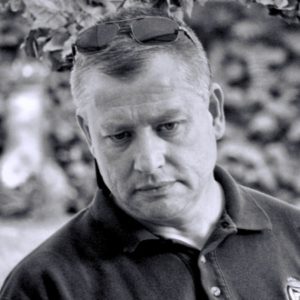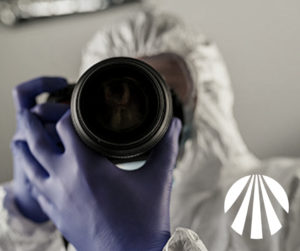What is the History of Crime Scene Photography? Where did it all begin?
Belgian convicts and a persnickety French police records clerk can be credited with the very origins of modern crime scene photography. No, they didn’t invent it, but like any emerging technology, the way it was used put it on the map.
First came the convicts. Belgian prison officials in the 1840s used photographs to document inmates, and by the 1850s, to track repeat offenders. At the same time, Swiss police photographed unfamiliar transient vagrants. The 1870s brought several test cases to U.S. courts where use of photography in criminal trials was upheld.
Parisian Police clerk Alphonse Bertillon first gained attention when he established lighting and categorical standards for mug shots in 1890. But it was his methodical grid approach used to photograph and diagram crime scenes in 1903 that gave him acclaim. In fact, he created techniques still used in crime photography today. His work brought the importance of scale and measurements to crime scene documentation – particularly locations of items of evidence relative to each other and the environment.
Remarkably, Bertillon completed scene documentation in three dimensions, a precursor to present-day reconstruction. Much like L-Tron’s OSCR360, Bertillon’s method placed viewers in the middle of a scene. A colleague, Rodolphe Reiss, expanded Bertillon’s concepts to establish the value of photographing detail in footprints, fingerprints, wounds, victim clothing, blood spatter – one of THE most important forensic techniques.
Bertillon’s approach, including a tripod he designed to photograph bodies from above, navigated challenges much like any new tech today entering the legal system. Back then, photography was seen by some as merely a “medium of the bourgeois,” according to Oxford University Press, its use to identify criminals criticized as “degrading.”
Once accepted “science” – bite mark comparisons for instance – are sometimes challenged and ruled out. Photography withstands the test of time. Digital photographs were questioned before they first appeared in court – that they could be altered. The challenge didn’t hold up. The standard remains simple testimony that images are “true and accurate representations.”
The History of Crime Scene Photography continues to change and evolve.
Beyond legal challenges, it turns out news photographers played an important role in public acceptance, and the demand for both still and video images that lives on today. In the 1940’s and 1950’s photographers hung around and even inside police stations waiting for crime to happen. In some instances, news photographers’ images served dual purposes – publication and evidence – the results of an “understanding” with police for access to scenes.
It was a time when the media getting to a crime scene before the police was an accepted thing. Graphic photographs were accepted, even expected. Not entirely unusual today, photographers may still get to a scene first, but issues of privacy, good taste, type of media market, victimization, even “probative value” within the courtroom now govern imagery usage.
As photography evolves so does its use by law enforcement. Seemingly new approaches to crime scene documentation really aren’t. They actually are rooted in ideas and pursuits of visionaries a century or more ago. Drone footage of today traces back to photographers in French bi-planes capturing images to analyze the effectiveness of bombing runs in WWI. Use of macro lenses to photograph evidentiary detail dates back 64 years to its invention in 1955. It was 52 years ago when courts began accepting video as evidence.
From macro to micro, analog to digital, law enforcement and the criminal justice system have expanded use of specialized disciplines once only imagined; technologies like three-dimensional scans, animated simulation, medical imagery, screen captures, satellite views, real-time surveillance, spherical photographs, and 360-degree video.
Pausing to reflect on the rich history of crime scene photography lends perspective to where it was, where we are today, and where its use by law enforcement is headed as today’s visionaries push the limits of technology in the name of justice.

Hank Kula is a retired police sergeant with 26 years in law enforcement. A certified crime scene investigator, crash reconstructionist, and former journalist, Hank works as a police instructor with recruits, veteran officers, and supervisors. His instructional specialties are in crime scene management and investigation, photography, communications and public information.
Sources:
Crime Scene Photography, Third Edition, Edward M. Robinson
History.com – A Look Back at the Crime Scene Photos That Changed How Murder is Documented
Oxford University Press – The Grainy and Grisly History of Crime Photography
Ranker.com – How Crime Scene Photography Evolved From The Victorian Era To Today
Wikipedia.org – History of forensic photography
Wired.com – The Grisly, Fascinating History of Crime Photography
